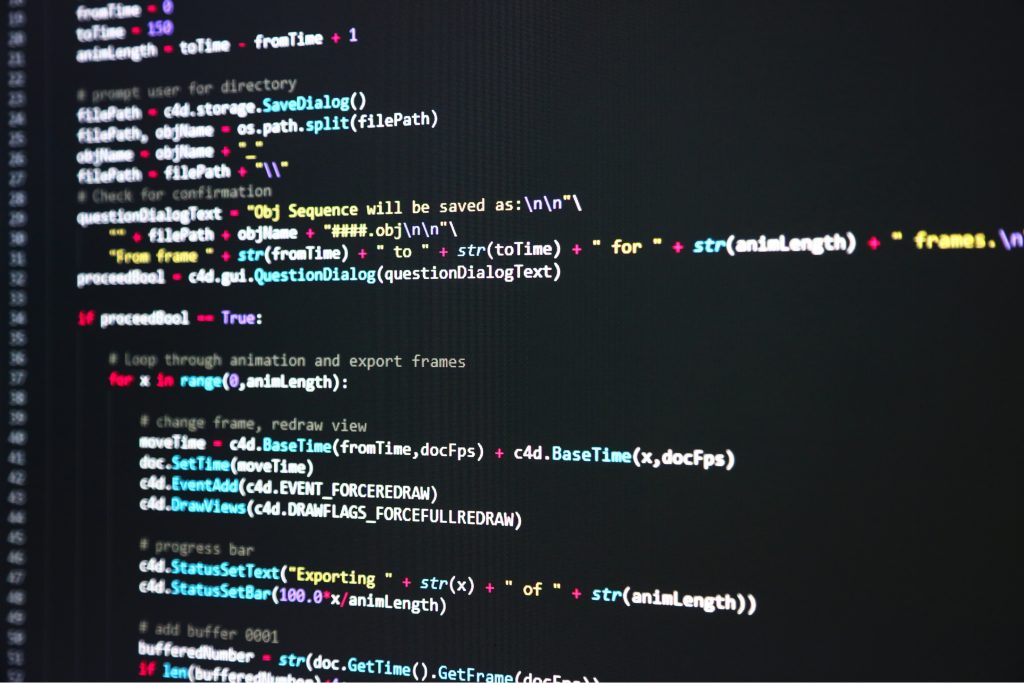Code safety is very important in the world of programming. Have you ever been afraid that someone would steal or reverse-engineer your Python code? You are not the only one if that’s the case. Python obfuscators can help with this issue by making it hard to understand and analyze your code.
Python is very popular among writers because it is easy to use and can be used in many ways. But because the language is open source, your code could be at risk of being copied or accessed by people who shouldn’t be able to. This is where Python obfuscators come in handy; they add another layer of security to keep your ideas safe.
If you’re a Python coder who worries about how safe your code is, learning about encryption and using obfuscators can make all the difference. If you hide your code’s real meaning and structure, it can’t be reverse-engineered or used without your permission. We will learn about Python obfuscators and how they can protect your code from people who don’t want to see it.
What is Python?
Python is a popular high-level computer language because it is easy to learn and understand. Python can be used for many things, from building websites to doing complex calculations in science. Its structure is very nice, and it is typed automatically. It was made by Guido van Rossum in the late 1980s and has become very famous ever since because it can be used in many ways and works well. Python has many tools and packages that can be used with it. This makes it a popular language for web creation, data analysis, and artificial intelligence.
Python is popular with writers of all skill levels because it has a lot of guidance and a busy community. Its lively environment and ease of use make it a great choice for people who are new to computing, and its wide range of features makes it useful in professional settings as well. Python is powerful and adaptable enough to meet a wide range of computer needs, from making complicated software to getting simple jobs done.
What is Obfuscation?
In computer programming, obfuscation is a way to make code hard to understand and stop reverse engineering. It works by purposely making code harder to read and decode by using methods like complicated phrasing and logic that is used more than once. The main goal of masking is to hide the code’s original purpose and functioning.
If you change computer code in a way that makes it hard to understand, you are obfuscating it. This can be done by giving variables, functions, and classes names that are hard for humans to understand and changing them with names that aren’t clear. This makes it harder for someone to figure out what the code is doing and how it flows.
Obfuscation is done for many reasons, but one of the most important ones is to protect intellectual property. Developers can keep their work from being easily copied or stolen by obfuscating code. Obfuscated code can make it hard for others to understand and copy the code’s functions, which can stop people from stealing it.
Avoiding malware discovery is another reason to use encryption. Researchers in computer security often look at malicious code to find holes and come up with ways to fix them. Malware writers make it harder for security researchers to understand and spot their harmful purpose by obfuscating their code. This makes it more likely that their code will not be found and will be run on targeted systems.
What is Python Obfuscator?
A Python obfuscator is a tool that changes Python code into a form that is hard to understand and reverse engineer. This keeps the code safe. Obfuscation is used to make it hard for potential attackers to understand the code’s structure and methods. This lowers the risk of someone accessing or copying the code without permission.
PyArmor, pyobfuscate, and Pyminifier are just a few of the tools that can be used to hide Python code. These tools hide the code by doing things like changing the names of variables, adding useless code, and encoding lines. This makes it hard to understand the disguised code, which makes it harder for attackers to get private information or make a copy of the original program.
Using Cython is a well-known way to hide Python program code. Cython is a computer language that builds on top of Python. It lets writers write code that works like Python and is then turned into C or C++ code that is very fast. When Python code is turned into Cython, it is much harder to reverse engineer because it doesn’t look like plain Python code and is harder to understand.
Overall, Python obfuscators keep Python code from being read, copied, or changed by people who aren’t supposed to. Attackers will have to work a lot harder to reverse engineer the code and get private information because these tools change the code into a form that is hard to understand.

Benefits of Using Python Obfuscators
Python obfuscators are a useful tool for making software programs written in the Python programming language safer and more secure. It is hard for potential attackers to understand and reverse engineer Python code because these obfuscators change it into a more complicated form. Python obfuscators are useful for more than just security. They can protect intellectual property, improve speed, and keep track of licenses.
Safety
In this modern age, keeping data and systems safe is very important. Several security steps should be put in place to protect important data and systems.
Methods of encryption are very important for keeping data safe. Strong encryption methods, like AES (Advanced Encryption Standard), can make sure that data is encrypted and can’t be easily read by people who aren’t supposed to. Controlling who can get in is also an important part of keeping things safe. Using strong passwords, multi-factor security, and role-based access rules can make it much less likely that someone will get into private data without permission.
Firewalls separate internal and external networks by blocking illegal entry and blocking data that could be dangerous. It is important to do regular security checks to find holes in the system and fix them right away. These checks can help figure out how well security measures are working and make sure that they meet industry standards.
It is very important to teach workers so that they are aware of possible security risks and how to best protect themselves from them. To make sure that all workers are security-aware, training programs should cover things like phishing attacks, social engineering, and safe internet habits.
By using encryption, access controls, firewalls, regular security checks, and thorough training for all employees, these security measures can greatly improve an organization’s security and protect its most important data and systems.
A layer of Protection Against Reverse Engineering
To stop people from trying to reverse engineer something, you can use more than one layer of safety. Code masking, encryption, and runtime security are some of these levels.
Code obfuscation is the process of changing the source code or generated code to make it harder to read and understand. You can change this by giving variables and functions new names, adding random pieces of code, or moving the code around so that it makes more sense. Code obscurity is very important because it makes the code harder to read and understand, which makes reverse engineering harder.
Another important measure of security is encryption. An encryption method is used to turn private data into a code that can’t be read. By scrambling the code, it becomes very hard for people who aren’t supposed to be there to figure out what it means and how it works. The encryption makes sure that even if the code is hacked, it can’t be used to figure out what it does.
Putting in place security measures while the code is being run is called runtime defense. This layer’s job is to find and stop bad things like analyzing, changing code, or violating memory access rules. Runtime security uses methods like checking the accuracy of the code, stopping debugging, and memory protection. This layer is important because it actively stops efforts to reverse engineer the code while it is running.
Implementing these levels of security, such as code obfuscation, encryption, and runtime protection, can help companies make their software much safer and stop people from trying to reverse engineer it. All of these layers work together to make it harder for attackers to read and understand the code, which protects the software’s privacy and security.
Better performance
Using a variety of tactics and techniques is important for improving success at work. Setting up effective processes that simplify operations and get rid of steps or bottlenecks that aren’t needed is an important part. When processes are optimized and technology is used correctly, workers can work faster and more efficiently, which leads to higher output.
Another important way to improve efficiency is to set clear goals. If workers know exactly what is expected of them, they can focus their efforts on meeting those goals. This helps them keep their motivation up, decide which jobs are most important, and work toward real results.
For performance to get better, comments must be given on a regular basis. By giving workers feedback and direction, bosses can help them see where they need to improve and give them the help they need to get better. Having regular feedback events can also be a chance to celebrate successes and thank people and teams for their hard work.
Creating a helpful workplace is the key to getting employees to work harder and be more motivated. When workers feel like they are backed, valued, and loved, they are more likely to put their all into their work. Encouraging workers to work together, talk to each other, and collaborate also helps create a good work setting that leads to growth and more work getting done.
How Does It Work?
It is important to know how a process or system works on the inside in order to use it and get around it easily.
Source Code Transformation
Changes are made to code to get desired results, like better speed or higher security. This is called source code change. A lot of software developers use this method to make current code work better and meet specific needs. This post will talk about why source code change is important and give you step-by-step directions on how to do it right.
Find the exact part of the code that needs to be changed. This is the first step in source code transformation. This might be because of speed problems, like taking too long to run or using too many resources, or security holes that need to be fixed.
After finding the problem area, it’s time to look at the code and figure out how it’s structured and what it depends on. This is very important to make sure that any changes to the code don’t add new bugs or affect how the software works.
Once the code has been carefully looked over, it can be changed. To get the results you want, this means making changes to the right parts of the code. If the goal is to boost speed, for instance, the code can be improved by getting rid of unnecessary processes, making methods better, or improving data structures.
Similarly, if the goal is to make things safer, steps like adding encryption or identity systems can be taken. It’s important to test the changed code carefully to make sure it works as it should and doesn’t add any new security holes.
To protect intellectual property and stop reverse engineering, source code change is a must. By changing the code, writers can hide the logic and make it harder for people who aren’t supposed to understand and copy the software to do so. This helps keep secret business logic, unique formulas, and other private data safe.
Renaming Variables and Functions
Changing the names of variables and functions is an important part of keeping code readable and easy to manage. Other coders will find it easier to understand and work with your code if you give it names that are clear and consistent across the whole library. Here’s how to change the names of variables and methods, step by step:
- Find the methods or variables that need new names. This could mean going over the code and making sure you know what each variable or function is for and how it fits into the bigger picture.
- Pick names for variables and functions that correctly describe their purpose and role. You might want to use names that have value, are easy to understand, and follow standard naming rules.
- All references to the variable or method should be changed. This includes both its statement and all of its uses in the source.
- Look over the code to see if there are any possible links or side effects. If you change the name of a variable or method, you might need to make more changes to other parts of the code for it to still work.
- Any comments or documents that talk about the variable or function that has been changed should be updated. This makes it easier for future writers to understand the code.
The source is easier to read and keep up to date if you follow these steps and give things names that explain what they do. It is very important that the coding is consistent so that there is no misunderstanding and everyone working on the project can understand and contribute well. Renaming variables and functions is a small effort that will pay off in the long run by making the code easier to manage.
Minification & Line Removal
Getting rid of lines and minifying code are two important steps in making code run faster and smaller. By getting rid of characters and lines of code that aren’t needed, the code works better generally.
The first thing that is done in minification is getting rid of blank spaces. There should be no extra spaces, tabs, or line breaks. These characters make the code easier to read, but they are not necessary for it to work. By getting rid of them, the file size is greatly reduced. Getting rid of comments from the code is also part of minification. When code is run, comments don’t do anything, but they help writers understand what parts of code are supposed to do. It makes the file smaller and easier to use by getting rid of them.
Another thing that minification tries to get rid of is semicolons that aren’t needed. Semicolons mark the end of a statement in some computer languages. In some cases, though, they can be left out without changing how the code works. Getting rid of semicolons that aren’t needed makes the code shorter and more efficient.
Overall, minification and line removal improve speed by getting rid of characters and lines of code that aren’t needed. Getting rid of spaces, notes, and semicolons that aren’t needed reduces the file size, which helps it run faster.
Encryption of Source Code
A very important part of mobile app security is source code encryption, which locks up private data in an app’s code so that only allowed users can view it. In this digital age, mobile apps are often used for many things, such as making purchases, storing personal information, and talking to others. So, making sure that these apps are safe has become very important.
A popular way to protect the source code is to obfuscate it, but this method has its limits. Code obscurity makes it harder to read and understand, but it doesn’t completely protect the code. Hackers with the right skills can still figure out how the code works and get private data like API keys, passwords, and other details.
This is why source code protection is so important. In addition to hiding the code, it encrypts the source code so that it can’t be read without the decoding key. If the code is encrypted, an attacker will not be able to get any useful information from the application even if they are able to disassemble it.
Source code encryption is important for protecting important parts of mobile app security because it gives you an extra line of defense against bad people. For safety reasons, it keeps private data safe even if the app is hacked. A practical way to protect user data and keep privacy in mobile apps is to use strong source code protection methods.
Well-known Python obfuscators
Making Python source code harder to understand and reverse engineer is what Python obfuscators do to protect it. These are three well-known Python obfuscators:
- Pyarmor: Pyarmor is a richly featured Python obfuscator that protects Python code in every way. It works with many operating systems, such as Windows, macOS, and Linux. Name obfuscation, control flow obfuscation, and constant obfuscation are all features of Pyarmor that hide code from human eyes. It also has features like licensing and virtualization that stop people from getting in without permission and stealing software. The only problem with Pyarmor is that it only works with Python 2 versions and not Python 3.7.
- Pyminifier: Pyminifier is a small Python obfuscator that gets rid of whitespace, comments, and docstrings that aren’t needed to optimize code size. It gets rid of all the style and comments in the code, making the source code much harder to understand. But Pyminifier can only obfuscate so much. It doesn’t have any advanced functions like name obfuscation or control flow obfuscation.
- This is a famous Python obfuscator called PyObfuscate. It changes the code to make it harder to understand. It has many obfuscation methods, such as string obfuscation, control flow obfuscation, and name obfuscation. PyObfuscate works with Python versions 3.9 and up and has a simple command-line interface. But PyObfuscate has some flaws. For example, it can’t protect against determined attackers or skilled reverse engineers.
Conclusion
Finally, Python obfuscators are strong tools that can help keep people from figuring out how your code works. You can make your code safer and harder to figure out by using a mix of methods, such as code transformation, string and variable encryption, and code optimization. There are some open-source choices, but for the most important projects, paid options may have more features and be safer. Any way you look at it, Python obscurity can help you keep bad people from reading your code and data.









